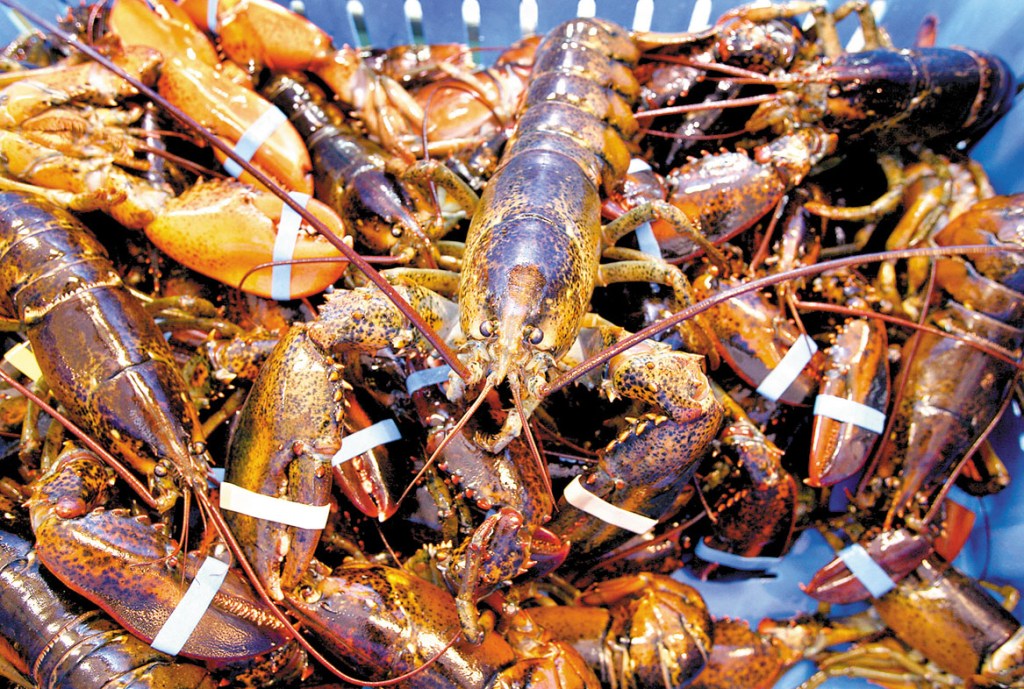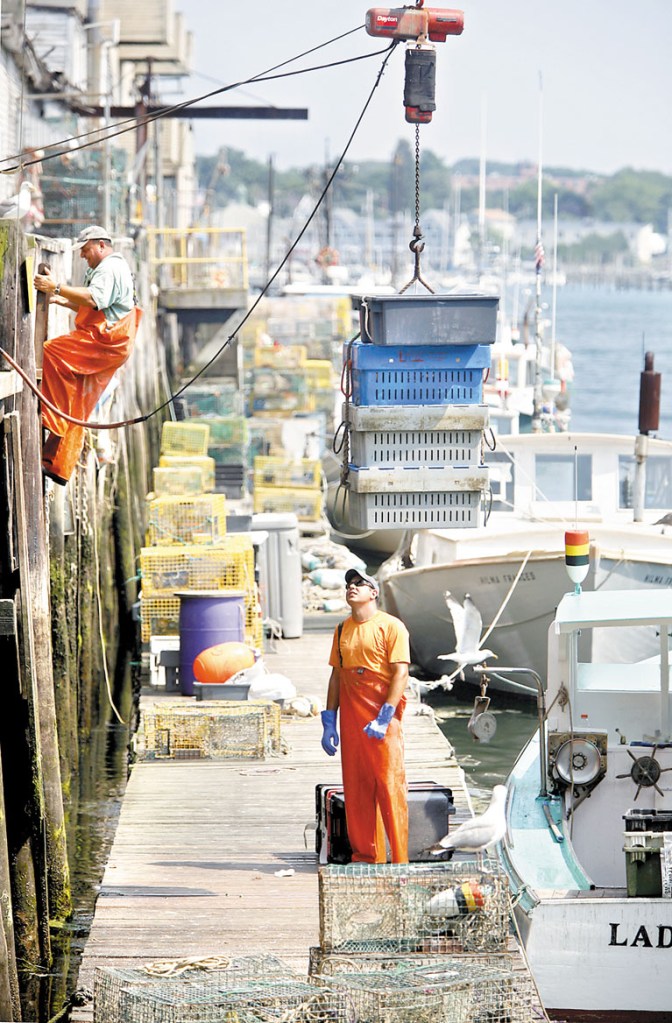Lobstermen who tied up for a few days, hoping to drive prices for their catch higher, apparently headed back to sea Tuesday, but without signs of having affected prices.
The lobstermen said the tie-up wasn’t a concerted effort, because that would violate federal anti-trust laws. So there’s no way to tell how many actually did sit things out for a few days.
Arnold Gamage, a lobsterman in South Bristol, said he didn’t tie up and most others fishing in his area also continued to go out, despite prices of about $2 per pound — near record lows — for lobster straight off the boat.
Gamage said he’s having to throw fewer lobsters overboard this year, because there aren’t as many that are under legal size, over legal size or females bearing eggs.
“I’m not even seeing as many soft ones this year as we do in other years,” Gamage said. “I never imagined that the problem we would have is too many good lobsters.”
The biggest problem seems to be a glut of soft-shell, or shedder, lobsters.
Lobsters normally shed throughout the year, although in most years, they typically get rid of their shells in June. After they shed, they hide from predators for a while until their shells harden up some, then emerge hungry and head for baited traps.
July is considered prime time for soft-shell lobsters; but this year, many lobsters had shed, hidden and emerged by early June.
“You’re dealing with an unprecedented situation that hasn’t happened in the history of commercial lobstering,” said Matt McAleney, a lobster dealer with New Meadows Lobster.
McAleney said prices are low, but “it’s never a good price from the fisherman’s standpoint.”
Retail prices are running about $4 a pound and up, he said, adding that summer prices are often volatile.
An unusual combination of factors is making it a good year for catching lobsters and not a particularly good one for selling them, said Robert Bayer, executive director of the University of Maine’s Lobster Institute.
He said Canadian lobstermen had a good year during their peak seasons, which are typically fall and winter, leading to an abundance of lobsters for Canadian processors to turn out as frozen lobster meat. They didn’t need as many lobsters from American fishermen to fill out orders, Bayer said, and many of the processors have shut down for much of the early summer.
Meanwhile, in the U.S., lobsters started shedding early and more seemed to shed at the same time, Bayer said.
“I don’t know what this means for later in the year,” he said, but for now it means plenty of hungry lobsters crawling into Maine lobstermen’s traps.
Bayer said the one upside in the glut of shedders is that those soft shells eventually harden.
Soft-shell lobsters are rarely shipped out of the local market because they’re weaker and can’t survive longer trips well. As the shells harden, they can be shipped farther and farther, meaning the market for Maine lobsters will grow earlier than normal this year because shells are hardening sooner.
For lobstermen, however, that bright spot still seems well off in the distance.
“We’ve put a lot of lobsters on the market,” Gamage said, but “it’s hard to make the business work at these prices.”
Send questions/comments to the editors.





Success. Please wait for the page to reload. If the page does not reload within 5 seconds, please refresh the page.
Enter your email and password to access comments.
Hi, to comment on stories you must . This profile is in addition to your subscription and website login.
Already have a commenting profile? .
Invalid username/password.
Please check your email to confirm and complete your registration.
Only subscribers are eligible to post comments. Please subscribe or login first for digital access. Here’s why.
Use the form below to reset your password. When you've submitted your account email, we will send an email with a reset code.